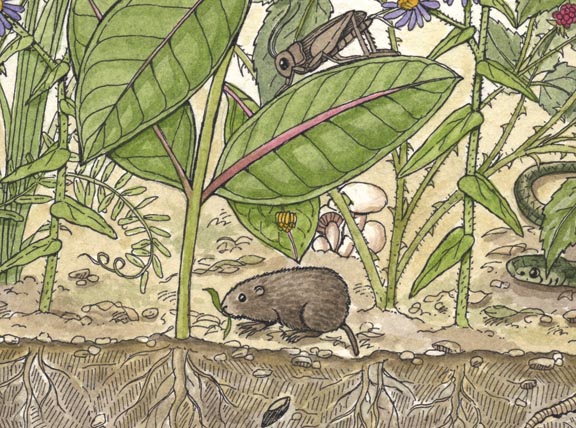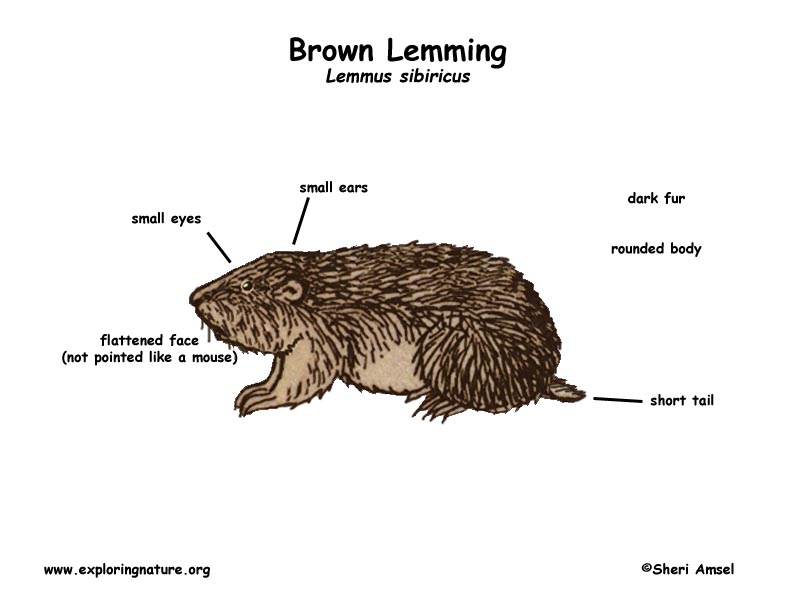

They are found in Siberia and the arctic tundra of North America.
They live in treeless tundra meadows.
They have rounded bodies with brown fur and a short tail. They have flat faces with small eyes and small ears that are hard to see under their thick fur.
They are territorial and live alone in tunnels they dig under the snow or tundra turf. They only come together to mate.
They eat only live green plants. In the summer, this is grasses and sedges. In the winter, frozen plant leaves and moss. They have to eat a lot all through the day and night, year round to stay well fed.
They are hunted by ermine, arctic fox, arctic wolves, snowy owls and wolverines.
Females are pregnant for 3 weeks (gestation). They have 2-12 young. Baby lemmings can start having their own babies in just a few weeks. They only breed in the winter and the summer. They don’t breed in the spring when the snow is melting or in the fall when the snow is falling.
They live about 2 years in the wild. They are listed as Lower Risk - least concern.
Kingdom: Animalia
Phylum: Chordata
Subphylum: Vertebrata
Class: Mammalia
Order: Rodentia
Suborder: Myomorpha
Family: Cricetidae
Subfamily: Arvicolinae
Genus: Lemmus
Species: Lemmus sibiricus
When you research information you must cite the reference. Citing for websites is different from citing from books, magazines and periodicals. The style of citing shown here is from the MLA Style Citations (Modern Language Association).
When citing a WEBSITE the general format is as follows.
Author Last Name, First Name(s). "Title: Subtitle of Part of Web Page, if appropriate." Title: Subtitle: Section of Page if appropriate. Sponsoring/Publishing Agency, If Given. Additional significant descriptive information. Date of Electronic Publication or other Date, such as Last Updated. Day Month Year of access < URL >.
Amsel, Sheri. "Lemming (Brown)" Exploring Nature Educational Resource ©2005-2024. December 13, 2024
< http://exploringnature.org/db/view/411 >

